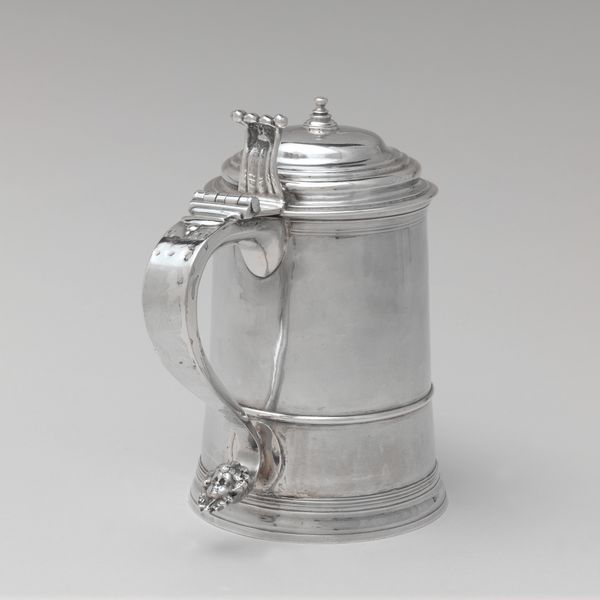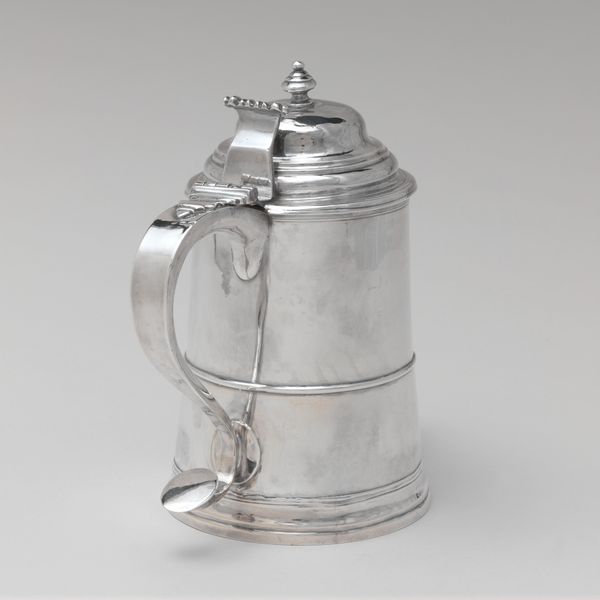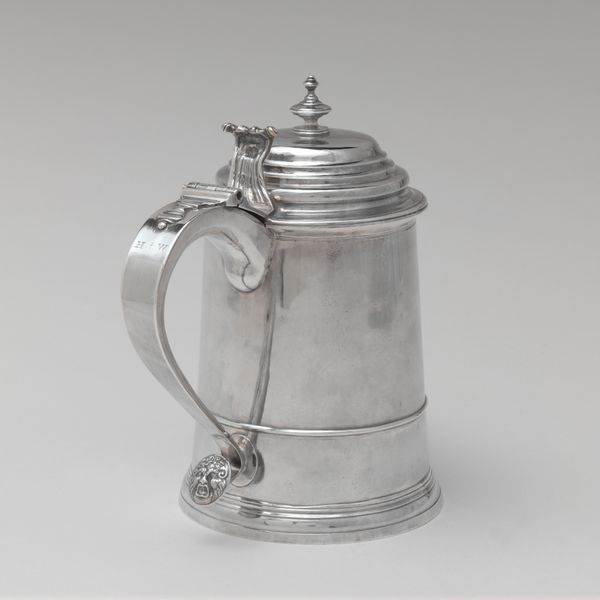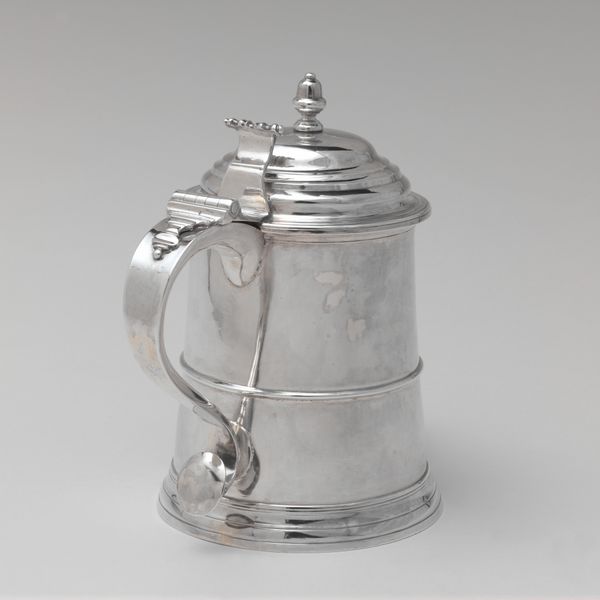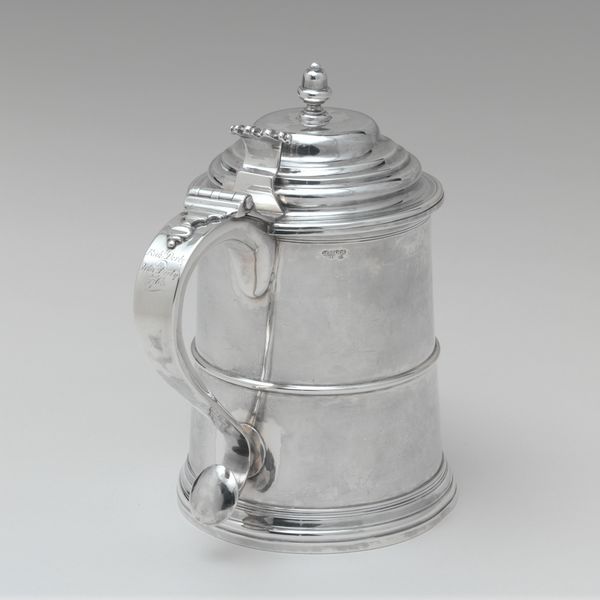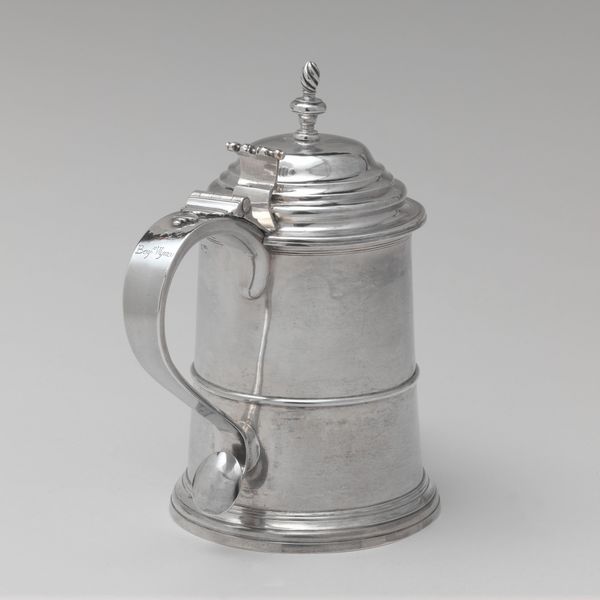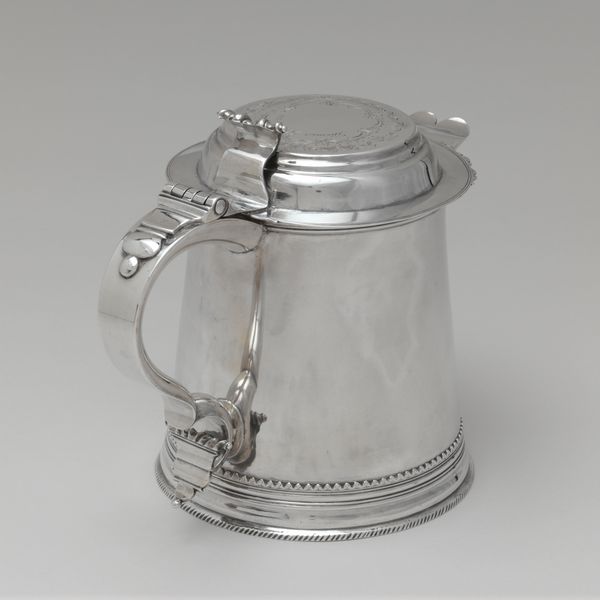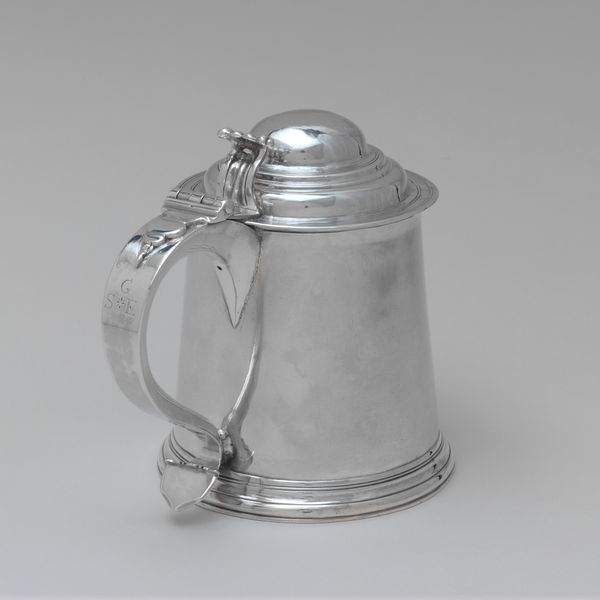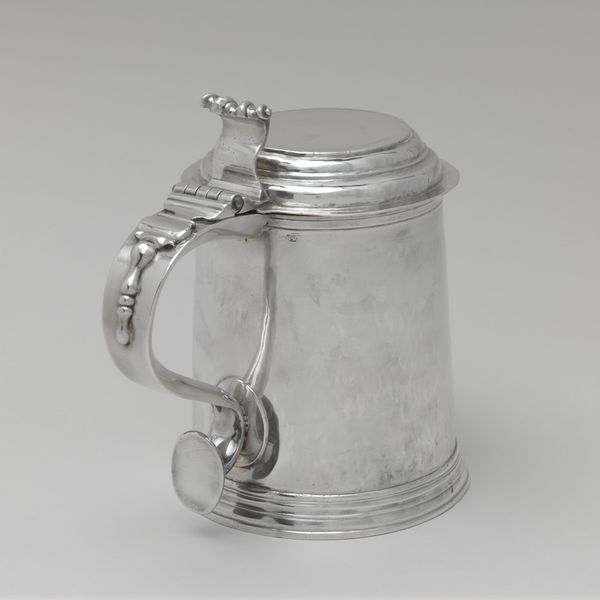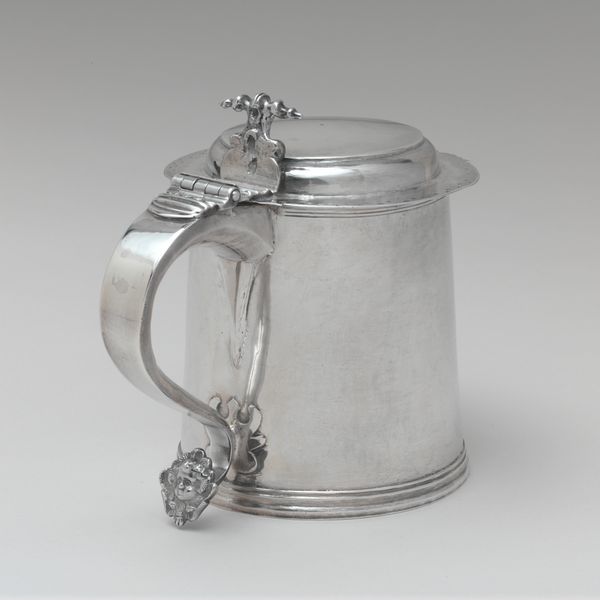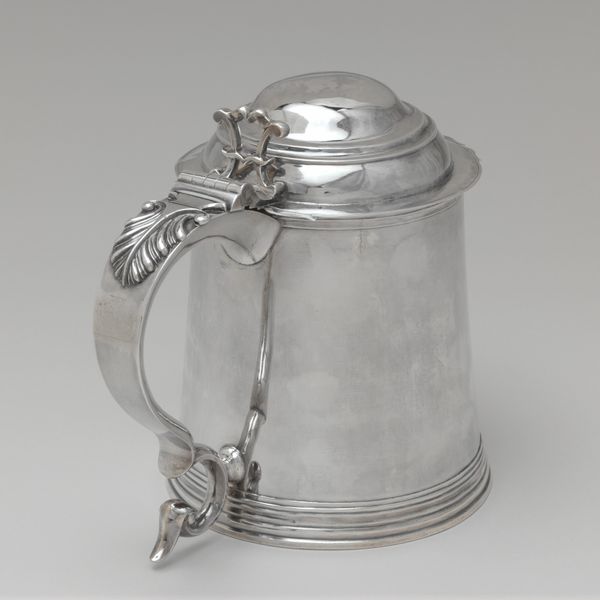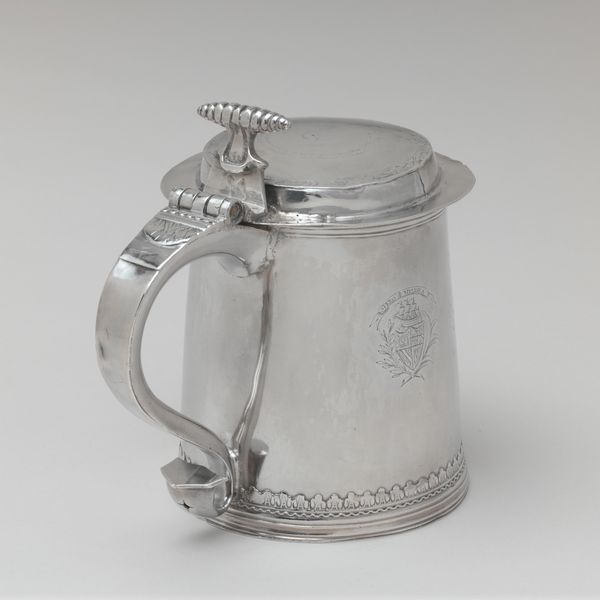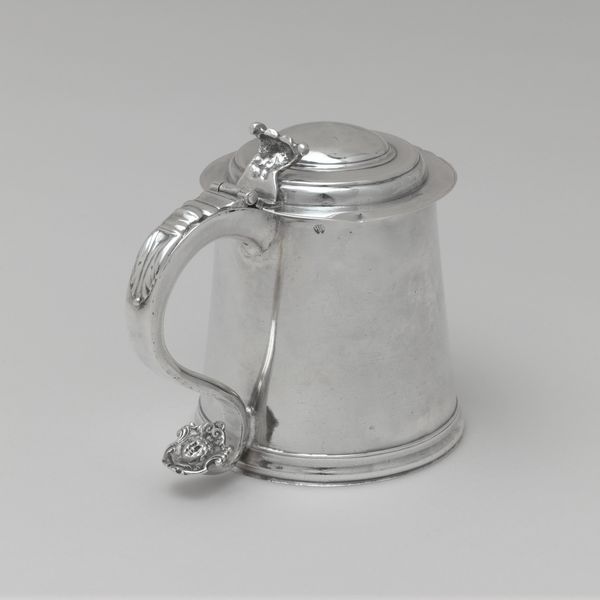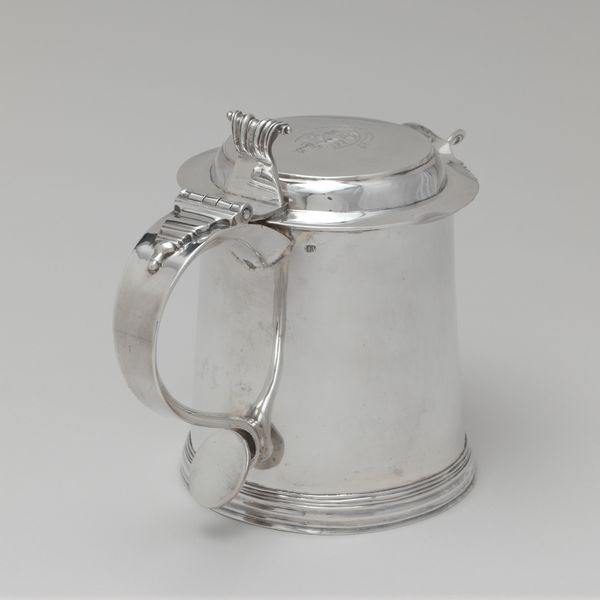
silver, metal
#
silver
#
baroque
#
metal
Dimensions: Overall: 7 11/16 x 7 3/16 in. (19.5 x 18.3 cm); 28 oz. 12 dwt. (889.1 g) Base: Diam. 5 3/16 in. (13.2 cm) Lip: Diam. 4 1/4 in. (10.8 cm)
Copyright: Public Domain
Curator: Ah, this gleaming silver tankard immediately exudes an air of substantial craftsmanship. Editor: Indeed. This is an object made between 1725 and 1750 by Edward Winslow. These objects carry deep meanings about colonial society. Curator: The Baroque style is quite evident. Winslow, crafting this from silver, probably reflected the values and power structures prevalent at the time in society. The handle and lid display considerable detail. Editor: It's important to remember that even utilitarian objects like this carried significant cultural weight. Winslow came from an important Boston family. These kinds of wares are symbolic and tell of the social mobility among traders, merchants, and their families, such as the Winslows. Curator: That is a key aspect: this isn’t just a container; it embodies status, identity and perhaps social aspiration, particularly in early colonial America. A lot of people owned silver but some did more, showing their position to the rest. Editor: Precisely. And in early colonial society, sumptuary laws, or the absence thereof, dictated who could possess and display luxury goods. The ownership of a tankard, like this one on display at the Metropolitan Museum of Art, likely reflected one's standing in the community. Curator: It is about understanding its role in solidifying class, status, and aspiration and this intersects in early society as this developed and became ingrained. Thank you for shedding light to understand Winslow´s tankard. Editor: It's a privilege to consider how objects can offer insight into societal dynamics. A glimpse into colonial hierarchy and emerging bourgeois society!
Comments
No comments
Be the first to comment and join the conversation on the ultimate creative platform.
